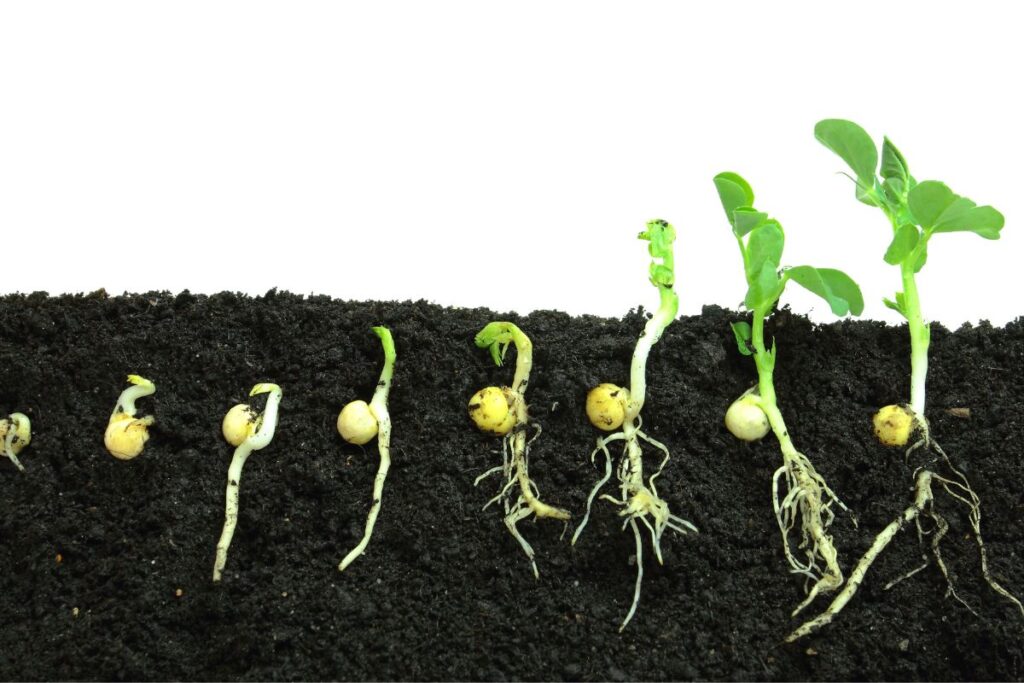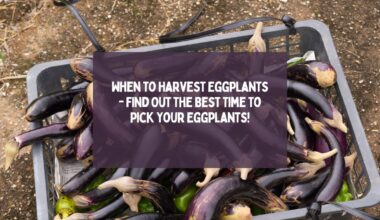As an avid gardener, I have always been interested in finding new and creative ways to grow plants. One of my recent experiments involved growing eggplants in plastic bottles, and I must say, the results were quite impressive!
Growing eggplants in plastic bottles is not only a great way to save space and reduce waste, but it is also a fun and rewarding experience. Plus, it is perfect for those who are short on outdoor space or live in an urban environment.
In this article, I would like to share my personal experience and guide you through the step-by-step process to plant eggplant in plastic bottles. With a few simple materials and some basic gardening skills, you too can enjoy fresh and delicious eggplants right at home.
So, let’s get started!
Benefits of Planting Eggplants in Plastic Bottles

Planting eggplants in plastic bottles has several benefits.
- First, it is an eco-friendly way to garden since it promotes the recycling of plastic bottles. By reusing plastic bottles as planters, you are helping reduce the amount of plastic waste that ends up in landfills or oceans.
- Second, it is a cost-effective way to grow eggplants. Plastic bottles are readily available and inexpensive, and you can use them over and over again.
- Third, it is a great solution for people who live in apartments or have limited outdoor space. You can easily place the bottles on your balcony, rooftop, or even inside your home near a sunny window.
Materials Needed To Plant Eggplant in Plastic Bottles
Before getting started growing aubergines in plastic bottles, you need to gather the necessary materials. Here’s a list of the things you’ll need:
- Plastic bottles (2-liter size)
- Potting soil or garden soil
- Compost
- Eggplant seedlings
- Scissors or a cutter
- Watering can
- Fertilizer
Preparing the Plastic Bottles

Plastic bottles can be repurposed for a variety of uses, including as planters for growing fruits, vegetables, and flowers. Before using plastic bottles as planters, it is important to prepare them properly to ensure optimal plant growth.
Here’s the step-by-step process of preparing plastic bottles to lant eggplant in plastic bottles.
- Clean the Bottles: Start by cleaning the plastic bottles thoroughly with soap and water to remove any dirt, debris, or bacteria that may be present. Give the bottles a thorough rinse and allow them to dry completely.
- Cut the Bottles: Using a pair of scissors or a cutter, cut off the top of the bottle, leaving the bottom part intact. The top of the bottle will serve as a lid for the planter, while the bottom will hold the soil and plant.
- Make Drainage Holes: Using a sharp object like a knife or scissors, make drainage holes at the bottom of the bottle. These holes will allow excess water to drain out and prevent water from accumulating at the bottom, which can cause root rot.
- Add Soil: Add a layer of soil to the bottom of the bottle, filling it up to about one-third of the height of the bottle.
- Add Compost: Add a layer of compost on top of the soil. Compost is rich in nutrients and will help nourish the plant.
- Add Soil Again: Add another layer of soil on top of the compost, filling the bottle almost to the top. Leave a small gap between the top of the soil and the top of the bottle to allow for watering.
- Water the Soil: Slowly water the soil, making sure that the water is absorbed evenly throughout the soil. To avoid causing root rot, take care not to overwater the bottle soil.
You can create an inexpensive and environmentally friendly method of growing your own fruits, vegetables, and flowers by preparing your plastic bottles for planting using these easy steps.
Related Reading:
- Growing Eggplant And Cucumbers Together Companion Planting
- 18 Common Aubergine Growing Problems and Their Solutions
- How to Grow Delicious Aubergines in Your Polytunnel?
Soil Mix and Seedling Preparation

Growing plants from seeds in plastic bottles is a fulfilling and rewarding experience. Proper seedling preparation is crucial to ensuring that your plants get off to a healthy start.
Here’s the step-by-step process of preparing your seedlings for planting aubergines in plastic bottles.
- Choose the Right Seeds: Select high-quality seeds from a reputable source. Check the seed packet for information on planting depth, spacing, and germination time.
- Prepare Seed Trays: Fill seed trays with a seed-starting mix. Make sure the mixture is evenly damp but not soggy by adding water to it.
- Plant the Seeds: Plant the seeds according to the instructions on the seed packet. Most seeds should be planted at a depth of about two to three times their diameter. Cover the seeds with a thin layer of seed-starting mix.
- Water the Seeds: Using a spray bottle or watering can water the seeds gently. Be careful not to dislodge the seeds or disturb the soil.
- Provide Proper Lighting: Place the seed trays in a warm, well-lit area. Most seedlings require 12 to 16 hours of light per day. If natural light is not available, consider using fluorescent or LED grow lights.
- Maintain Adequate Humidity: Cover the seed trays with plastic wrap or a humidity dome to maintain sufficient humidity. Remove the cover once the seedlings have emerged.
You can get your seedlings ready for strong growth and a good eggplant harvest by adhering to these straightforward steps.
Planting the Eggplant Seedlings in Plastic Bottles

Growing eggplants in plastic bottles is a great way to save space and reduce waste. If you have already prepared your plastic bottles and seedlings, you are now ready to plant your eggplants.
Here’s the step-by-step process of planting eggplant seedlings in plastic bottles.
- Fill the Bottles: Fill the prepared plastic bottles with a mixture of soil and compost, leaving a space of about 2 inches from the top.
- Make a Hole: Using your finger or a small tool, make a hole in the soil about 2 inches deep.
- Insert the Seedling: Carefully insert the eggplant seedling into the hole, making sure that the roots are not bent or twisted.
- Cover the Roots: Gently cover the roots of the seedling with soil, pressing down slightly to remove any air pockets.
- Water the Soil: Water the soil thoroughly, making sure that the water reaches the roots of the seedling. Avoid overwatering, as this can lead to root rot.
- Place the Bottles: Place the plastic bottles in a warm, sunny location where the eggplants can receive at least 6 hours of direct sunlight per day.
These easy steps will help you grow your own fresh produce in a sustainable and affordable manner by planting eggplant seedlings in plastic bottles.
Give Proper Water and Fertilizer To Eggplants
Eggplants need to be watered regularly, especially during the hot summer months. Water the plants when the soil feels dry to the touch, but make sure not to overwater them, as this can lead to root rot. Eggplants also need fertilizer to grow well.
Apply a balanced fertilizer (10-10-10) every one to two weeks during the growing season. You can use a water-soluble fertilizer or an organic fertilizer like compost tea.
Maintenance and Care

Keep the soil in bottles free of weeds, as they can compete with the eggplants for water and nutrients. Check the plants regularly for pests and diseases, and take appropriate action if necessary. Staking the aubergine plants may also be necessary to keep them upright as they grow taller. You can use sticks or wooden stakes to support the plants in plastic bottles.
Harvesting Eggplants From Plastic Bottles
Eggplants are ready to be harvested when they reach their full size and the skin is shiny and firm. Cut the stem of the eggplant using a sharp knife or scissors. The refrigerator is the best option for storing eggplants. They should last a couple of days.
Related Reading:
- How to grow trailing tomato plants in small areas?
- How to Grow Cucumbers From a Cucumber?
- How To Grow Mini Pumpkins From Seeds?
- When to Transplant Zucchini Seedlings? Let’s find out
- How To Grow Delicious Danvers Carrots?
Conclusion
Planting eggplants in plastic bottles is an eco-friendly and cost-effective way to grow your own fresh produce, even if you have limited space. With just a few materials and some basic gardening skills, you can enjoy the satisfaction of growing your own eggplants.
Keep in mind to regularly water and fertilize the aubergine plants, protect them from pests and diseases, and take pleasure in the harvest when it comes.







